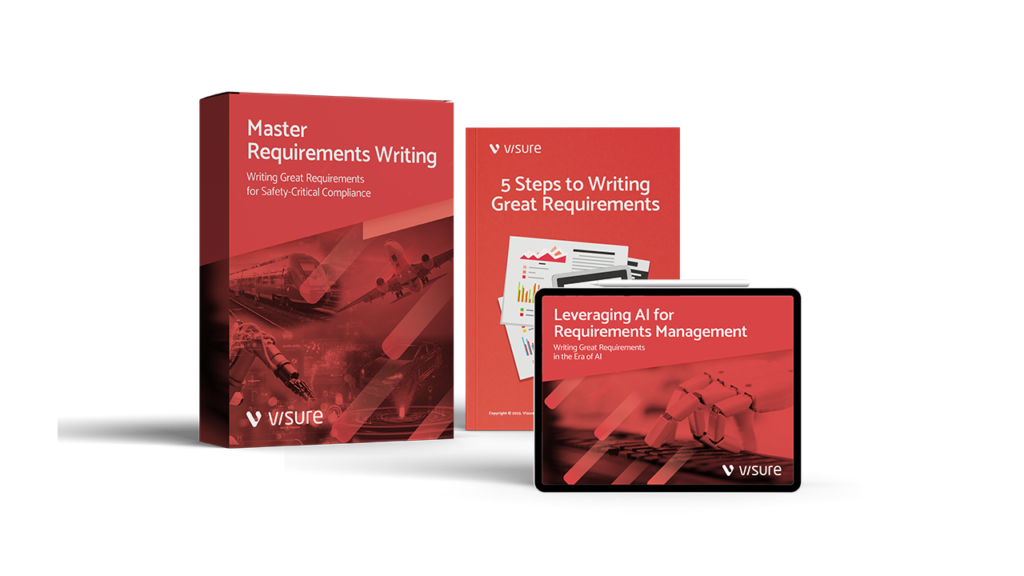In today’s fast-paced software development landscape, the demand for high-quality applications delivered in record time has driven rapid advancements in software testing and quality assurance (QA). Traditional testing methods, while effective, often struggle to keep up with the complexities of modern software, including multi-platform integration, continuous updates, and user-centric designs. This is where Artificial Intelligence […]
Blog Visure solutions
Best Requirements Management Books & Resources
Mastering requirements management is critical for project success in the complex world of systems engineering and software development. The right resources can empower professionals with insights, techniques, and tools to improve their craft. This guide highlights the best requirements management books and resources, along with other valuable assets to help you streamline your processes and […]
Read More… from Best Requirements Management Books & Resources
Best Requirements Specification Training Workshops & Courses
Mastering requirements specification is critical for professionals in systems engineering, business analysis, and software development. Whether you’re refining your existing skills or diving into the world of requirements engineering, finding the right requirements specification course can help you streamline your process, reduce rework, and ensure project success. This guide explores some of the best requirements […]
Read More… from Best Requirements Specification Training Workshops & Courses
Best Requirements Management Training Workshops & Courses
Effective requirements management plays a crucial role in project success in the fast-evolving world of systems and software development. Investing in a Requirements Management Course or Requirements Management Training equips professionals with the skills to manage requirements effectively, ensuring projects meet stakeholder expectations while adhering to budget and time constraints. This comprehensive guide explores some […]
Read More… from Best Requirements Management Training Workshops & Courses
Best Requirements Engineering Training Workshops & Courses
In today’s competitive market, effective requirements engineering is critical for successful project management and system development. Whether you’re a beginner or an experienced professional, gaining expertise in this domain can significantly enhance your career. This article explores the best requirements engineering training workshops, courses, and online learning opportunities designed to equip professionals with the necessary […]
Read More… from Best Requirements Engineering Training Workshops & Courses
What is Requirements Modeling: Process & Tools
Requirements modeling plays a crucial role in the development of software systems, providing a clear representation of user needs and system functionality. By leveraging professional modeling software, teams can improve communication, reduce errors, and streamline the development process. In this article, we’ll explore the different techniques, the benefits of visual modeling, and how professional tools […]
Read More… from What is Requirements Modeling: Process & Tools
Requirements Capability Model
In today’s fast-paced business environment, effective requirements management is crucial for successful project outcomes. To help organizations streamline their processes and ensure robust project delivery, the Requirements Capability Model (RCM) serves as a framework for assessing and improving requirements management capabilities. By implementing this model, organizations can align their practices with industry standards and best […]
AI in Requirements Management: Techniques, Process and Tools
Introduction to AI in Requirements Management The integration of Artificial Intelligence (AI) in Requirements Management is reshaping how organizations approach the complex processes of gathering, defining, and managing requirements. By leveraging advanced technologies like AI-driven Requirements Engineering, teams can improve accuracy, efficiency, and collaboration across the development lifecycle. In today’s fast-paced industries, AI-enabled Requirements Management […]
Read More… from AI in Requirements Management: Techniques, Process and Tools
Requirements Traceability Links
Introduction In today’s fast-paced development environments, ensuring that all project requirements are tracked, managed, and verified throughout the lifecycle is crucial for success. This is where requirements traceability links come into play. Requirements traceability links provide a clear path from initial requirements through the design, development, testing, and deployment phases, ensuring that every stakeholder remains […]
16 Best Requirements Management Software for 2025 | Pros and Cons
Introduction In today’s fast-paced business environment, managing requirements effectively is crucial for the success of any project. Requirements Management Software plays a pivotal role in streamlining the Requirements Engineering process, enhancing collaboration, ensuring traceability, and driving overall project success. With so many options available, selecting the right Requirements Management Tool is essential for ensuring that […]
Read More… from 16 Best Requirements Management Software for 2025 | Pros and Cons
